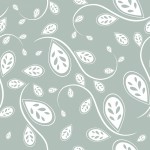Dutch Baroque Orchestra, Gerard de Wit harpsichord & conductor, Ivan Iliev violin
67:42
Dutch Baroque Records
[dropcap]F[/dropcap]or any new recording of the Bach violin concertos to draw attention, it either has to feature some amazing new violinist whose interpretation of the music sets the world alight with excitement, or it has to offer some other novelty. While not wishing to be disrespectful to Ivan Iliev, whose performances are both stylish and accomplished, it is the inclusion here of the rarely heard concerto in A minor BWV1044 that will draw most attention; its slightly dubious heritage as most likely the work of one of the composer’s many musical sons means that there are few public performances, which is rather as shame as it is a really nice piece (and – one would have thought – an ideal programme partner for the fifth Brandenburg, although how many of that set is every performed alone in concert these days?). The accomplished sounding Dutch Baroque Orchestra plays one to a part, with cello and double bass, and an extra ripieno violin in the “double” concerto (BWV1043) to give balance. Congratulations to the group on their first recording on their own label; but, for their next project, I hope they will select a native speaker to do the English translation of the booklet.
Brian Clark
[iframe style=”width:120px;height:240px;” marginwidth=”0″ marginheight=”0″ scrolling=”no” frameborder=”0″ src=”//ws-eu.amazon-adsystem.com/widgets/q?ServiceVersion=20070822&OneJS=1&Operation=GetAdHtml&MarketPlace=GB&source=ss&ref=as_ss_li_til&ad_type=product_link&tracking_id=infocentral-21&marketplace=amazon®ion=GB&placement=B076CV2GK4&asins=B076CV2GK4&linkId=03fecc9b63531dd722d32f5ee0b57045&show_border=true&link_opens_in_new_window=true”]
[iframe style=”width:120px;height:240px;” marginwidth=”0″ marginheight=”0″ scrolling=”no” frameborder=”0″ src=”//ws-eu.amazon-adsystem.com/widgets/q?ServiceVersion=20070822&OneJS=1&Operation=GetAdHtml&MarketPlace=DE&source=ss&ref=as_ss_li_til&ad_type=product_link&tracking_id=earlymusicrev-21&marketplace=amazon®ion=DE&placement=B076CV1H3G&asins=B076CV1H3G&linkId=fd7ffd3fdf1636305ca4d5f0cbef86ac&show_border=true&link_opens_in_new_window=true”]
[iframe style=”width:120px;height:240px;” marginwidth=”0″ marginheight=”0″ scrolling=”no” frameborder=”0″ src=”//ws-na.amazon-adsystem.com/widgets/q?ServiceVersion=20070822&OneJS=1&Operation=GetAdHtml&MarketPlace=US&source=ss&ref=as_ss_li_til&ad_type=product_link&tracking_id=earlymusicrev-20&marketplace=amazon®ion=US&placement=B076CSVYVC&asins=B076CSVYVC&linkId=d4ea8d2dc30b5f5846deb8596b2a2e9d&show_border=true&link_opens_in_new_window=true”]



